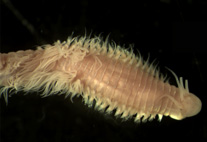Abstract
Coelophysoid dinosaurs represent the earliest major radiation of neotheropods. These small-to-medium-sized agile bipeds lived throughout much of Pangaea during the Late Triassic–arly Jurassic. Previously reported coelophysoid material from Asia (excluding the Gondwanan territory of India) is limited to two specimens that comprise only limb fragments. This paper describes a new genus and species of coelophysoid, Panguraptor lufengensis, from the Lower Jurassic Lufeng Formation of Yunnan Province, China. The new taxon is represented by a well-preserved skeleton, including the skull and lower jaw, the presacral vertebral column and partial ribs, the right scapula, a partial forelimb, part of the pelvic girdle, and an almost complete hind limb. It is distinguished from other coelophysoid theropods by the unique combination of the following three character states: 1) diagonal (rostrodorsal-caudoventral) ridge on lateral surface of maxilla, within antorbital fossa, 2) elliptical, laterally facing fenestra caudodorsal to aforementioned diagonal ridge, and 3) hooked craniomedial corner of distal tarsal IV. Cladistic analysis recovers Panguraptor lufengensis deeply nested within Coelophysoidea as a member of Coelophysidae, and it is more closely related to Coelophysis than to “Syntarsus”. Panguraptor represents the first well-preserved coelophysoid theropod dinosaur from Asia, and provides fresh evidence supporting the hypothesis that terrestrial tetrapods tended to be distributed pan-continentally during the Early Jurassic.

